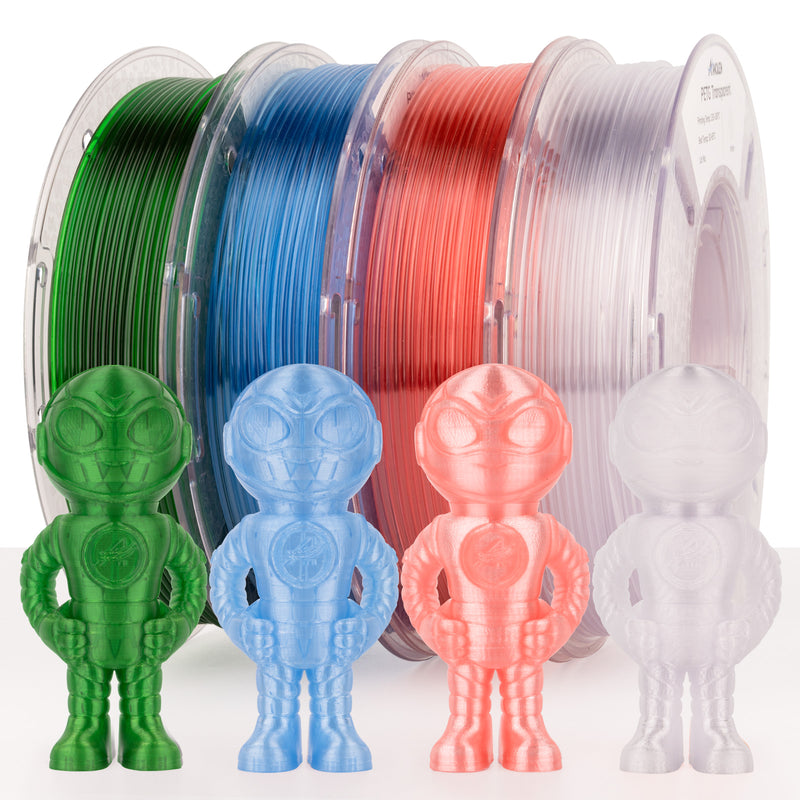Unlock the Secrets of PETG: The Ultimate Game-Changer in 3D Printing!
In the world of 3D printing, the choice of filament can make all the difference between a successful project and a frustrating failure. Filament selection is crucial, as it affects the final product's strength, appearance, and functionality. Among the various materials available, PETG filament has emerged as a favorite among both enthusiasts and professionals alike. Known for its versatility and robustness, PETG offers a unique blend of properties that cater to a wide array of applications. In this article, we will delve into the fascinating world of PETG filament, exploring its defining characteristics, uses across different industries, and the numerous benefits that make it a go-to material for 3D printing projects.

Understanding PETG Filament
PETG, or polyethylene terephthalate glycol, is a thermoplastic copolyester that combines the best features of both PET and glycol. It is often compared to other common filaments like PLA (polylactic acid) and ABS (acrylonitrile butadiene styrene), but it stands out due to its unique chemical composition and properties. Unlike PLA, which is biodegradable and made from renewable resources, PETG is more durable and less brittle, making it a better choice for functional parts. Additionally, while ABS is known for its strength, it can be challenging to print due to warping and fumes. PETG, on the other hand, is easier to work with and has a lower shrinkage rate during printing. The manufacturing process of PETG involves the polymerization of PET with glycol, which alters its properties, resulting in a material that is both tough and flexible. This combination of attributes contributes to its rising popularity in the 3D printing community.
Properties of PETG Filament
PETG filament exhibits several key physical and chemical properties that make it an excellent choice for 3D printing. One of its most notable characteristics is its strength, which is comparable to ABS, making it suitable for both functional and aesthetic applications. Additionally, PETG is highly flexible, allowing it to withstand impacts and stresses without cracking. Its temperature resistance is also commendable; it can endure higher temperatures than PLA without deforming, which is crucial for applications requiring durability. Another remarkable aspect of PETG is its transparency, which allows for the creation of clear parts or aesthetically pleasing models. This transparency is particularly appealing for designers and artists looking to create eye-catching prints. Furthermore, PETG has excellent layer adhesion, resulting in prints that are not only strong but also visually appealing, with fewer visible layer lines compared to other materials.
Uses of PETG Filament in 3D Printing
The versatility of PETG filament enables its use in various applications across multiple industries. In prototyping, it is favored for creating durable and functional models that can withstand testing and evaluation. Manufacturers often turn to PETG for producing parts that require a balance of strength and flexibility, making it ideal for components in automotive, electronic, and consumer products. Hobbyists also appreciate PETG for its ease of use and reliability, often employing it in projects ranging from custom toys to intricate artistic designs. For instance, a friend of mine recently used PETG to create a set of intricate gears for a mechanical model, and the result was not only functional but also visually striking. The ability to produce both functional parts and aesthetic models highlights PETG's adaptability, catering to both practical and artistic needs.
Benefits of Using PETG Filament
There are numerous advantages to using PETG filament in 3D printing that make it a popular choice among creators. Firstly, its durability is a significant benefit; PETG prints are resistant to impact and wear, ensuring longevity in various applications. Moreover, PETG is relatively easy to print, making it less intimidating for beginners while still meeting the expectations of experienced users. The material also boasts recyclability, aligning with the increasing demand for environmentally friendly practices in manufacturing. Unlike some other filaments, PETG can be recycled, contributing to a more sustainable 3D printing experience. Additionally, PETG tends to be cost-effective, providing an excellent balance between quality and price, which appeals to hobbyists and professionals alike. Whether you're a novice looking to create your first model or an experienced designer working on complex projects, PETG meets a wide range of user needs.
Final Thoughts on PETG Filament
In conclusion, PETG filament has solidified its place as an essential material in the 3D printing landscape, thanks to its unique properties and versatility. From understanding its chemical composition to exploring its various applications and benefits, it is evident that PETG is a game-changer for both novice and experienced users. As you plan your next 3D printing project, consider the advantages of using PETG filament and how it can enhance your creations. With its durability, ease of use, and recyclability, PETG not only meets but exceeds the expectations of the modern maker, paving the way for innovative designs and functional parts.








